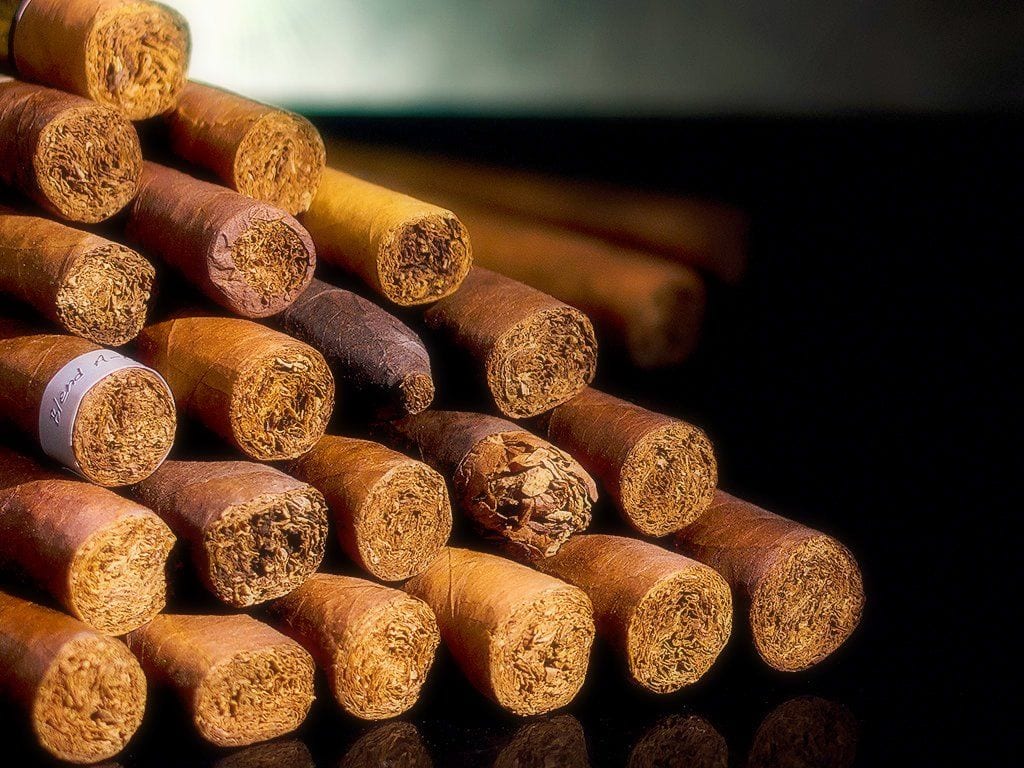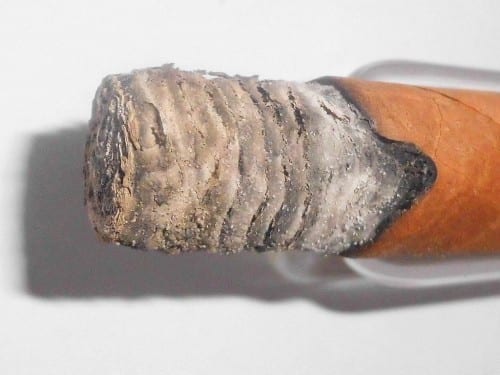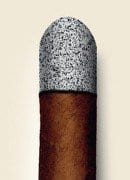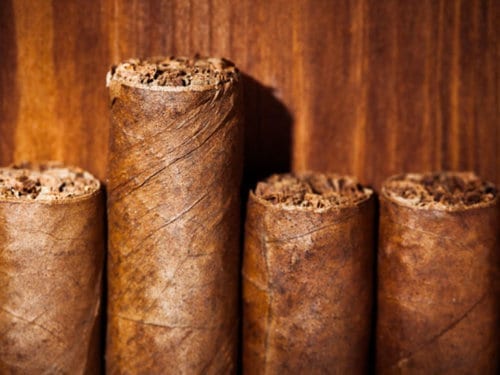At first sight merely the waste after enjoyment, ash performs an important function and reveals a lot about the cigar.
The most important function of ash is its influence on the burn temperature. The longer the ash, the less oxygen reaches the burning end of the cigar, which in turn reduces the burning temperature and cools the smoke. This also allows the aromas of the tobacco to develop better.
The further the cigar burns down, the higher the temperature of the smoke, and accordingly the ash should be left to stand longer as the cigar gets smaller.
Color, structure and firmness are features of the ash that give an indication of the tobacco used and the rolling techniques. And finally, the shape of the ash produced allows you to draw conclusions about the quality of the cigar.
The burning of the tobacco destroys or converts the organic substances, i.e. those containing carbon. The water contained in the tobacco evaporates, releasing carbon dioxide. The non-organic substances do not burn, and form the ash, which is made up of oxides and bicarbonates of potassium, calcium, manganese, silicon and various other chemical elements such as phosphorus, cadmium or zinc.
The Color of the Ash
The flavor and aroma of a tobacco depend not only on the plant variety but also on the nitrogen content and on the type of nitrogen compounds in the soil. The latter also influences the nicotine content of the tobacco. High potassium content means that the tobacco has good burning qualities and greater elasticity.
Leaves that, after being dried and humidified again, can be stretched between the hands without breaking (it is really impressive to see how elastic tobacco leaves are) tend to burn better. If the soil has too little phosphorus, the leaves can be brittle and the tobacco of a lower quality. Phosphorus acts like a kind of catalyst, regulating the absorption of various substances in the tobacco plant.
If a cigar burns with a white or light grey ash, this is a sign that the soil had high potassium content. The organic substances burn almost completely and the ash has hardly any black particles.
A white or steel-grey ash is also an indication of a good combustion process, but not an indication of good flavor or fine aromas. A cigar with a blackened ash need not automatically be a damp squib. It is simply a sign that the tobacco is not burning as it should.
The Structure of the Ash
Every passionado will have experienced this: a cigar, the ash of which simply refuses to fall off, is light-colored and so firm that the cigar could be stood vertically on the 4 cm long ash. And then again precisely the opposite, a cigar that produces an ash that seems more like an exploding firecracker than a premium quality cigar. Why does this happen?
Above all in recent years, an increasing number of short, thick cigars have come onto the market, and are so firmly rolled that you wouldn’t believe you could smoke them. After they have been cut, you are often surprised to find that they have an astonishingly low draw resistance. Then again, there are cigars that feel soft to outside pressure but have such a high resistance that you can’t enjoy smoking them.
The structure of the ash depends very decisively on the quantity of tobacco used and the rolling technique. A densely rolled cigar produces a firm ash; a loosely rolled cigar tends to produce a crumbly ash that easily falls off. If the leaves are placed straight in the bundle, the ash has a different structure than if the leaves are turned slightly towards each other during the making of the bundle. The latter leads to a higher draw resistance and a slower burning speed.
Ash Patterns
The mixture of the different tobaccos is of fundamental significance (both for the taste experience and for the shape of the ash). The volado is the tobacco from the lowest levels of the tobacco plant. It has a high mineral content and burns very well. The seco/viso comes from the middle section of the tobacco plant, and burns less well but is more aromatic than the volado. The top part of the tobacco plant produces the ligero, which burns badly. It gives the cigar strength and causes the “physical” effects on the smoker’s body.
What is left behind are ashes and memories.
At the same time, the ligero is the thickest and most stable leaf, giving the cigar firmness and structure. The different properties of the tobaccos are the reason for the typical structure of the cigar.
The ligero with its poor burning characteristics should be positioned at the center of the tobacco bundle. It is there that the burn temperature is highest. The better burning seco/viso is placed around the ligero, while the outside of the cigar is the mild and well burning volado. If the structure is correct, an even burn is possible despite the different burning characteristics of the tobaccos.
Every cigar smoker has certainly experienced a cigar that burns down dreadfully at least once. Canoeing, tunneling, extreme irregularities – all of which sometimes make you doubt your own abilities. But as a general rule, it’s not the smoker who’s at fault.
Canoeing
If the cigar burns on one side only, the reason is usually to be found in the fact that the roller didn’t place the ligero exactly in the center of the cigar when making the bundle. The more the ligero shifts to the outside, the stronger the canoeing effect, since it’s there that the cigar burns more slowly.
Tunneling
If the burning end doesn’t take the form of a cone but instead is a cavity in the center of the cigar, this is clearly a rolling fault. The torcedor has made a mistake and used the volado as the middle leaf and the badly burning ligero as the outer leaf.
Conical Crater Burn
A conical crater burn can, but need not, be a rolling fault. If a seco has been used instead of a volado as binder and wrapper, the cigar burns correctly as a cone in the center but the ash protrudes on the outside.
Straight Burn
The typical burn of a short filler that makes use of chopped tobacco. Here, the tobacco burns completely evenly.
Conical Burn
This is how a perfectly rolled cigar should burn. Within the cigar, the ligero burns slowly and leaves behind a cone.
Photos: Clubcigarren.com
Finally, it must be remembered that the cigar is meant to give us pleasure. Some see this as a competition for the longest ash, others as the quiet enjoyment of a wonderful product. However, even the wonderful products of a craftsman can have faults. This article is intended to help distinguish product faults from the smoker’s own faults.
Tobacco de Sol for Filler and Binder
This article was published in the Cigar Journal Spring Edition 2013. Read more



















Pingback: How do a Cigar’s Construction Flaws Relate to Off-Flavors? | Cigar Journal